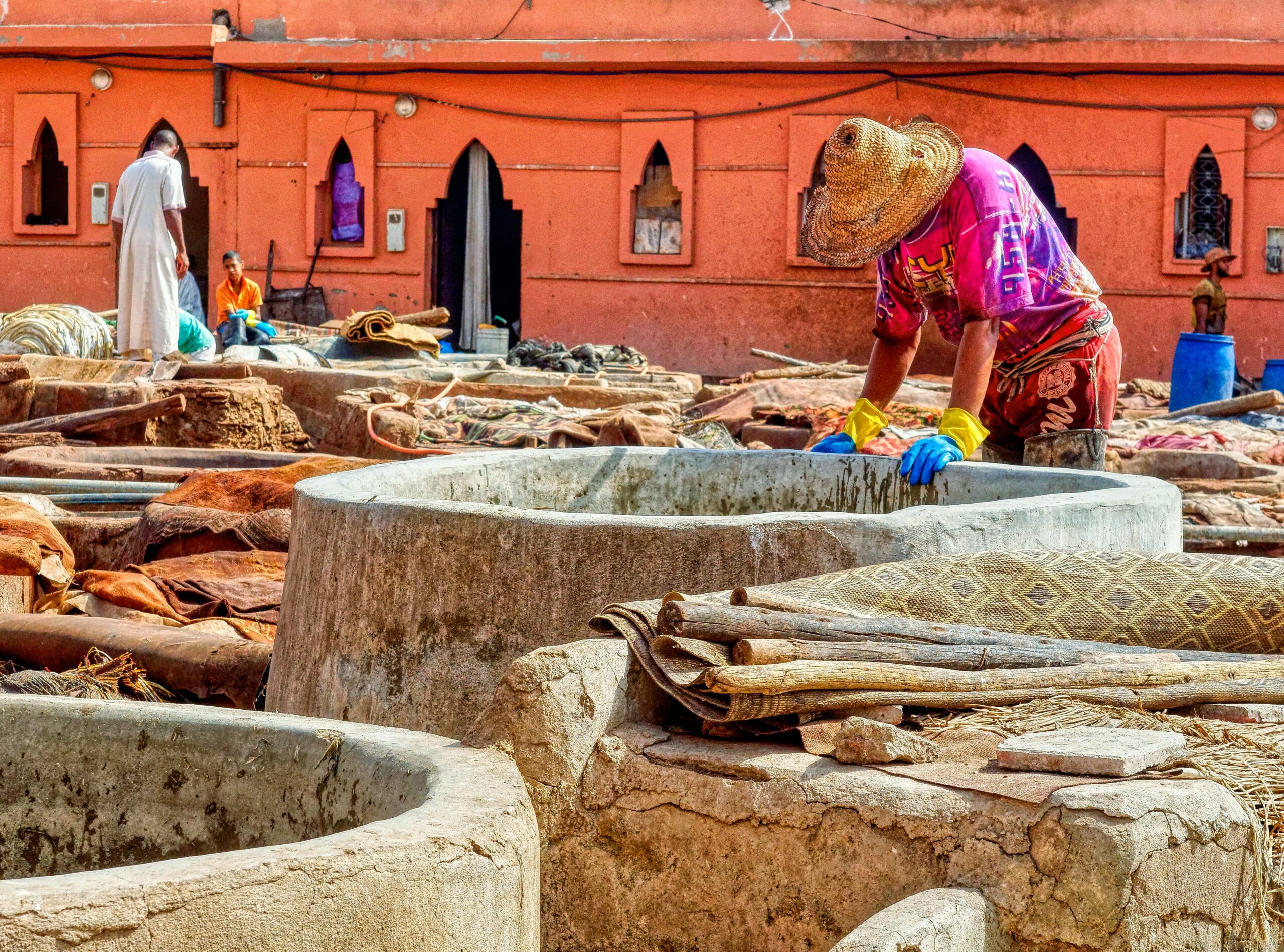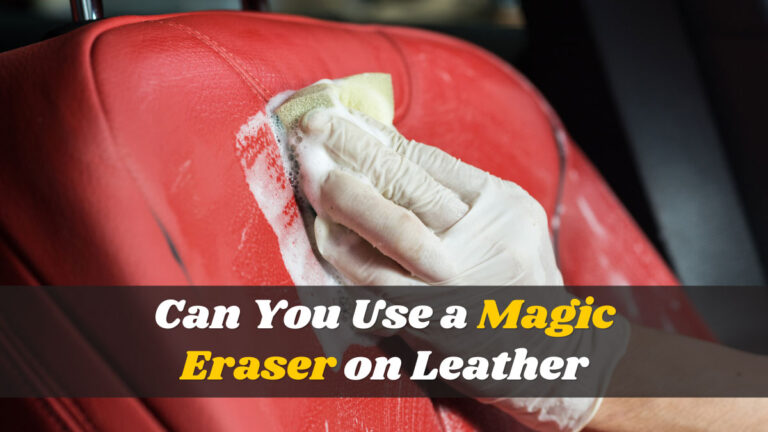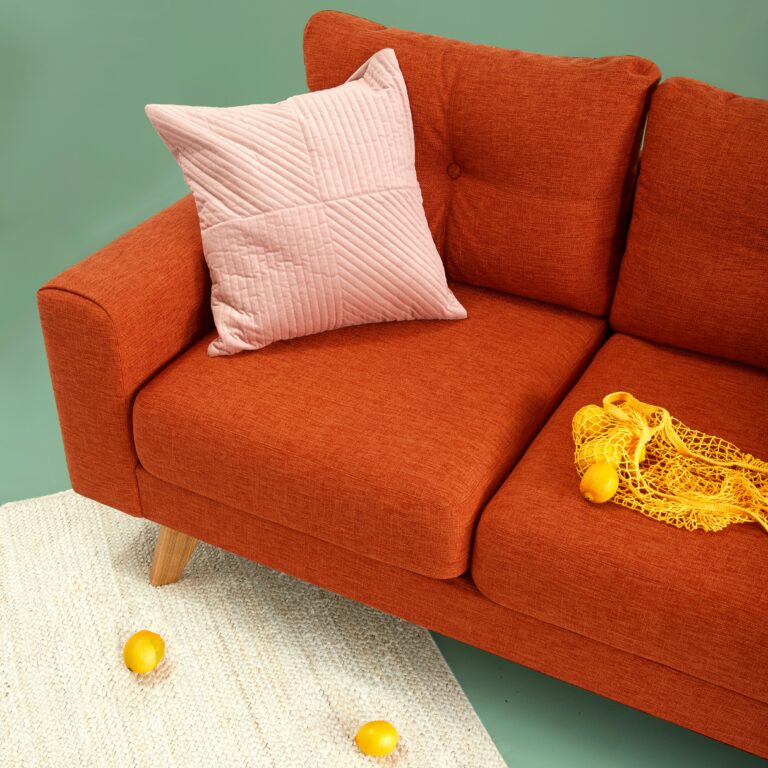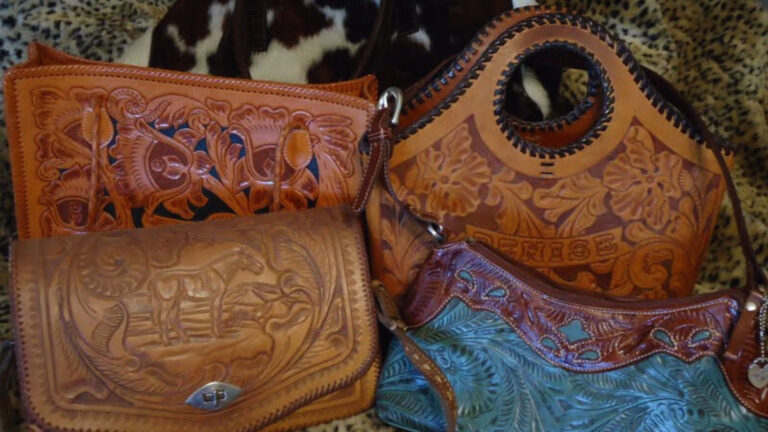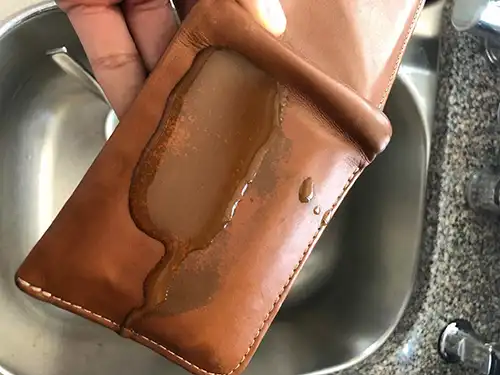Eradicate Stains: Comprehensive Methods to Save Your Leather
Removing Ink Stains from Leather
Ink stains on leather can be particularly challenging due to leather’s porous nature. The quicker you act, the better your chances of preventing the ink from settling deeply into the leather’s pores. Here are some essential strategies for tackling ink stains.
Quick Action for Ink Stains
When dealing with an ink stain, immediate action is crucial. The longer the ink sits, the more it seeps into the leather, making it harder to remove. According to Eiken Shop, quick action can prevent the stain from becoming permanent.
- Blot, don’t rub:
- Use a clean, white cloth to blot the stained area gently.
- Avoid rubbing, as it can spread the ink and push it deeper into the leather.
- Test in an inconspicuous area:
- Before applying any cleaning solution, test it on a small, hidden section of the leather.
Commercial Leather Cleaners
Commercial leather cleaners are specially formulated to clean leather effectively and safely. Available in sprays, wipes, and creams, these products offer a convenient solution but can be costly and contain harsh chemicals.
| Product Type | Form | Pros | Cons |
|---|---|---|---|
| Leather Cleaner Spray | Spray | Easy to use | May contain harsh chemicals |
| Leather Cleaning Wipes | Wipes | Convenient | Can be expensive |
| Leather Cleaner Cream | Cream | Effective on tough stains | Requires thorough application and removal |
For those looking for a hassle-free option, commercial cleaners can deliver good results. Always follow the manufacturer’s instructions to avoid damaging your leather item.
DIY Methods for Ink Stain Removal
DIY methods offer a more cost-effective alternative and can be done using common household items. However, caution must be exercised as improper use can dry out or damage your leather.
- Vinegar:
- Mix equal parts white vinegar and water.
- Use a cloth to apply the solution to the stain.
- Dab gently and avoid soaking the leather.
- Rubbing Alcohol:
- Dilute rubbing alcohol with water in a 1:1 ratio.
- Dab the mixture on the stain using a cotton ball or cloth.
- Blot gently and ensure the leather is not overly saturated.
- Baking Soda:
Sprinkle baking soda over the stained area.
Let it sit for a few hours.
Gently brush off the baking soda and wipe with a damp cloth.
DIY Solution Application Potential Risk Vinegar Solution Apply, dab, and blot away Can dry out leather if overused Rubbing Alcohol Dab with diluted solution May cause discoloration Baking Soda Sprinkle, sit, and brush off Potential drying of leather
For more DIY remedies and natural methods, read our comprehensive guides on how to get pen out of leather and how to get water stains out of leather.
By understanding these techniques, you can confidently address ink stains on your leather items and maintain their quality.
Understanding Oil Stains on Leather
When it comes to maintaining your leather items, understanding how to manage oil stains is essential. Oil can deteriorate leather’s appearance and integrity, making swift action necessary.
Effects of Oil on Leather
Oil stains are particularly problematic for leather due to the material’s porous nature. Oil can penetrate deeply into the leather, causing discoloration and weaken its structure. Over time, oil exposure may lead to peeling or even irreparable damage (Vintage Leather).
To grasp the long-term impact of oil on different leather types, consult the following table:
| Leather Type | Effect of Oil Stains | Long-term Impact |
|---|---|---|
| Full-Grain | Deep penetration | Dullness, peeling, structural damage |
| Top-Grain | Surface penetration | Discoloration, potential for peeling |
| Genuine Leather | High susceptibility to oil damage | Permanent discoloration, wear |
Tips for Removing Oil Stains
For effective oil stain removal, consider these tips:
- Act Quickly: The faster you address the stain, the easier it will be to remove. Delayed action allows the oil to penetrate deeper.
- Blot, Don’t Rub: Gently blot the stain with a clean cloth to absorb excess oil.
- Use Suitable Cleaning Agents: Mild soap and water can be effective for light stains. Avoid harsh chemicals and abrasive materials that may damage the leather.
For more detailed techniques, explore our guide on how to get oil out of leather.
Household Items for Oil Stain Removal
If you prefer DIY solutions, several household items can help. These remedies are gentle on your leather while effectively lifting oil stains.
Dish Soap
Dish soap can be an effective remedy. Mix a few drops with warm water and lightly dab the stain.
Vinegar
White vinegar is another useful tool. Test it on an inconspicuous area first. Dab a small amount on the stain using a clean cloth.
Baking Soda and Cornstarch
These items can absorb oil before it sets into the leather. Make a paste with water for baking soda or simply sprinkle cornstarch on the stain, let it sit, and then brush it off.
| Household Item | Method |
|---|---|
| Dish Soap | Mix with warm water, dab gently |
| Vinegar | Test first, dab with a clean cloth |
| Baking Soda | Make a paste, apply, remove after dry |
| Cornstarch | Sprinkle, let sit, brush off |
For additional methods and detailed instructions, refer to our section on how to get oil out of leather shoes.
Using the appropriate techniques and maintaining your leather properly can preserve its appearance and durability. For ongoing care, explore articles on why does leather crack and peel and how to soften hard leather. This comprehensive approach will ensure your leather items remain in excellent condition for years to come.
Types of Leather and Stain Vulnerability
Understanding your leather type is essential when tackling stains. Full-grain, top-grain, and genuine leathers have varying levels of stain resistance and durability. Here’s a breakdown of each type and how they handle oil stains.
Full-Grain Leather and Oil Stains
Full-grain leather is known for its strength and durability, as it retains the outermost layer of the hide, providing a natural and unaltered finish (Eiken Shop). However, its porous nature makes it susceptible to oil stains, which can penetrate deeply if not addressed promptly. Gentle cleaning methods are crucial to prevent long-term damage.
When an oil stain occurs, act quickly:
- Blot the excess oil with a clean cloth.
- Apply a paste of baking soda and water.
- Let it sit for a few hours.
- Gently brush off the paste.
Be sure to spot-test on an inconspicuous area first. For more tips on removing oil stains, visit our guide on how to get oil out of leather.
Top-Grain Leather and Stain Resistance
Top-grain leather is sanded and buffed to remove imperfections, giving it a smoother finish. This type of leather is more resistant to stains and easier to maintain. Its durable, yet refined texture can handle spills better than full-grain leather.
Tips for dealing with stains on top-grain leather:
- Use a clean cloth to blot the stain.
- Apply a mixture of mild dish soap and water.
- Gently rub the area using a soft cloth in a circular motion.
- Wipe away any excess solution with a damp cloth.
Genuine Leather and Stain Susceptibility
Genuine leather is made from the lower layers of the hide and is often treated to mimic higher-quality leathers. It is more prone to damage from oil stains due to its more heterogeneous composition (Eiken Shop). Immediate attention and careful cleaning are vital to maintain its appearance and longevity.
Steps to remove oil stains from genuine leather:
- Blot the excess oil immediately.
- Use a clean cloth dipped in a mixture of vinegar and water to gently blot the stain.
- Apply baby powder or cornstarch to absorb remaining oil; let it sit for a few hours.
- Brush off the powder gently.
Always spot-test in a hidden area to avoid discoloration (Vintage Leather).
| Leather Type | Strength | Stain Resistance | Cleaning Ease |
|---|---|---|---|
| Full-Grain | High | Moderate | Moderate |
| Top-Grain | Medium-High | High | High |
| Genuine Leather | Medium | Low | Low-Moderate |
For more details on maintaining leather quality and addressing other common issues, check out our articles on why does leather crack and peel and how to soften hard leather.
Environmental Impact of Leather Choices
When considering how to get stains out of leather, understanding the environmental impact of your leather choices is crucial. This section discusses the production and sustainability of faux leather and real leather, as well as their durability.
Faux Leather Production
Faux leather, also known as artificial or synthetic leather, is produced from materials like polyvinyl chloride (PVC) and polyurethane (PU). These materials are derived from petroleum and plastics, which are not sustainable. PVC production releases harmful chemicals such as cancer-causing dioxins and can take 200-500 years to decompose in landfills, making it far from environmentally friendly (Is It Leather?). Furthermore, faux leather production, particularly in countries with lax regulations like China, has been identified as a significant pollutant. A 2019 study found that synthetic leather production is one of China’s most polluting industries, posing both environmental and health risks to workers.
Real Leather Sustainability
Real leather is often praised for its natural, biodegradable, and renewable properties. Additionally, real leather can be recycled and upcycled sustainably, making it more eco-friendly compared to faux leather. Real leather is also a byproduct of the meat industry, which means it makes use of materials that might otherwise go to waste. When evaluating the sustainability of real leather, it’s essential to consider its long life span and ability to be maintained and repaired, reducing the need for frequent replacements.
Faux vs. Real Leather Durability
While faux leather products may initially be more affordable, they are often less durable than real leather. Faux leather can crack or peel over time, raising concerns about its longevity and the environmental impact of its disposal in landfills (Is It Leather?). Real leather, on the other hand, offers unmatched durability, softness, and beauty. With proper care, real leather can develop a rich patina over time and last for decades.
| Leather Type | Durability | Environmental Impact | Sustainability |
|---|---|---|---|
| Faux Leather | Low | High (pollutant) | Low (not biodegradable) |
| Real Leather | High | Moderate (renewable) | High (biodegradable, recyclable) |
Understanding these factors can help you make informed decisions about your leather products. For more tips on how to soften hard leather or how to remove smell from leather jackets, explore our related articles.
Maintaining Leather: Tips and Remedies
To keep your leather items in pristine condition, it’s crucial to follow regular maintenance routines. This section covers essential tips and remedies to ensure the longevity and beauty of your leather.
Leather Conditioning Importance
Leather is a natural material that requires proper care to maintain its look and durability. Just like your skin, leather has pores that need to breathe and stay hydrated. Regular conditioning helps to keep the leather soft, supple, and prevents it from drying out or cracking (Love Your Leather).
Condition your leather items at least once a year using leather cream or hide food to extend their lifespan (Octane Seating). Applying these products replenishes the natural oils in the leather, maintaining its flexibility and preventing it from becoming brittle.
DIY Natural Remedies
For those who prefer natural solutions, several DIY remedies can help keep your leather in optimal condition:
- Olive Oil and Vinegar Mix
- Combine one part white vinegar with two parts olive oil.
- Apply the mixture to the leather using a soft cloth.
- Let it sit for a few minutes, then buff with a dry cloth for a shiny finish.
- Coconut Oil
- Warm a small amount of coconut oil until it becomes liquid.
- Use a soft cloth to apply the oil to your leather in circular motions.
- Buff the leather with a clean, dry cloth.
- Beeswax
- Melt beeswax in a double boiler.
- Apply the melted wax to the leather and let it absorb.
- Buff with a soft, dry cloth for a protective and moisturizing layer.
Using these DIY remedies can help maintain the health of your leather while avoiding harsh chemicals. Always test any solution on a small, hidden area of the leather first to ensure it does not cause discoloration or damage.
Post-Cleaning Leather Care
After cleaning or treating your leather items, it’s crucial to follow up with proper care to ensure they remain in excellent condition. Here are some post-cleaning tips:
- Drying: Always allow leather to air dry naturally. Avoid direct sunlight and heat sources, as these can cause the leather to dry out and crack.
- Storage: Store leather items in a cool, dry place away from direct sunlight. Use breathable fabric bags for storage to prevent moisture buildup and allow air circulation.
- Routine Cleaning: Wipe your leather items with a damp, soft cloth regularly to remove dust and dirt. For more stubborn stains, refer to specific cleaning guides like how to get oil out of leather shoes or how to get pen out of leather.
By following these maintenance tips and remedies, you can ensure that your leather items remain in excellent condition for years to come. For more information on related topics, visit our articles on why does leather crack and peel and how to soften hard leather.
Leather Statistics and Quality Assessment
Understanding the statistics and quality assessment of leather is crucial for anyone looking to buy leather products or seeking to understand how to get stains out of leather.
Natural Markings on Leather
Natural markings can significantly affect the quality and appearance of leather. These marks are often a result of the animal’s life experiences, such as insect bites, thorn scratches, and stretch marks. Approximately only 5% of all rawhides are free of damage and suitable for processing as aniline leather since the natural grain remains visible on aniline leather (Leather Dictionary).
| Marking Type | Description | Usability |
|---|---|---|
| Insect Bites | Small, pockmark-like spots | Generally good |
| Thorn Scratches | Long, narrow lines | Usable with minor cosmetic adjustments |
| Dung Marks | Irregular, dark stains | Usable if not severe |
| Pitchfork Injuries | Deep, old scars | High severity makes leather unusable |
Damage and Leather Usability
Leather can often be salvaged and made usable despite certain types of damage. Minor damage is often sanded, filled, dyed, and embossed to create a uniform texture and appearance. As long as the damage is not too extensive and the repair is durable, such leather is considered of good quality within its price range (Leather Dictionary). However, severe and frequent damages, such as those caused by pitchfork injuries, often render leather unusable.
| Damage Type | Description | Processing | Quality |
|---|---|---|---|
| Minor Scratches | Shallow and narrow | Sanded, filled, dyed | High |
| Dung Marks | Irregular stains | Cleaned, sometimes dyed | Moderate |
| Pitchfork Injuries | Deep scars | Difficult to repair | Low/Unusable |
Leather Processing Insights
The processing technique significantly influences the final quality of leather. The best-quality leather, known as aniline leather, requires flawless hides. Leather with minor damage undergoes various treatments, including sanding, filling, and dyeing, to achieve consistency. This processed leather can still be of excellent quality if done correctly (Leather Dictionary).
When looking to maintain and treat your leather products, it’s essential to handle stains immediately. Following the golden rules of acting fast and treating appropriately, depending on the substance involved and the fabric, can save your leather from long-term damage (Octane Seating). For more tips on maintaining leather, check out our guides on how to soften hard leather and how to remove smell from leather jacket.
Understanding these factors will help you make informed decisions about leather products, ensuring you get the best quality for your needs. For more on different types of leather and their stain vulnerabilities, refer to our section on how to get oil out of leather shoes.

